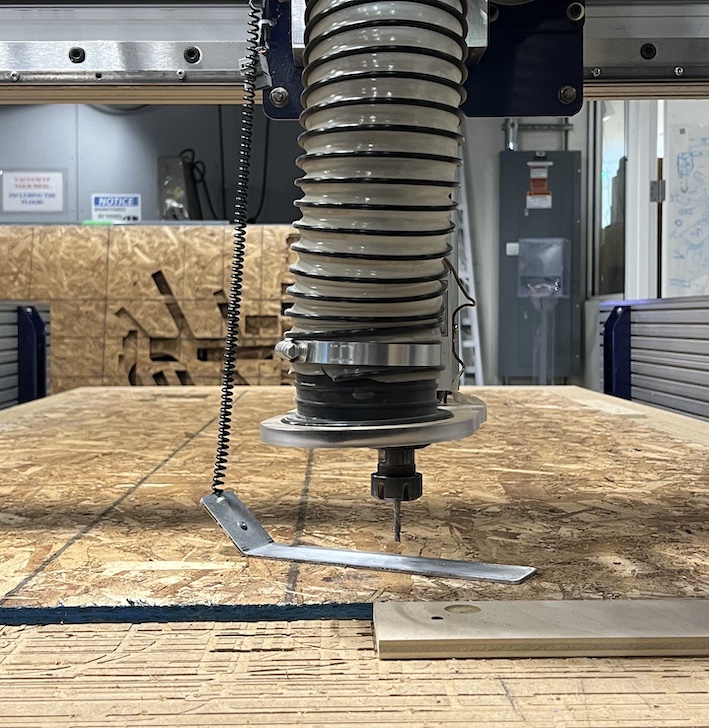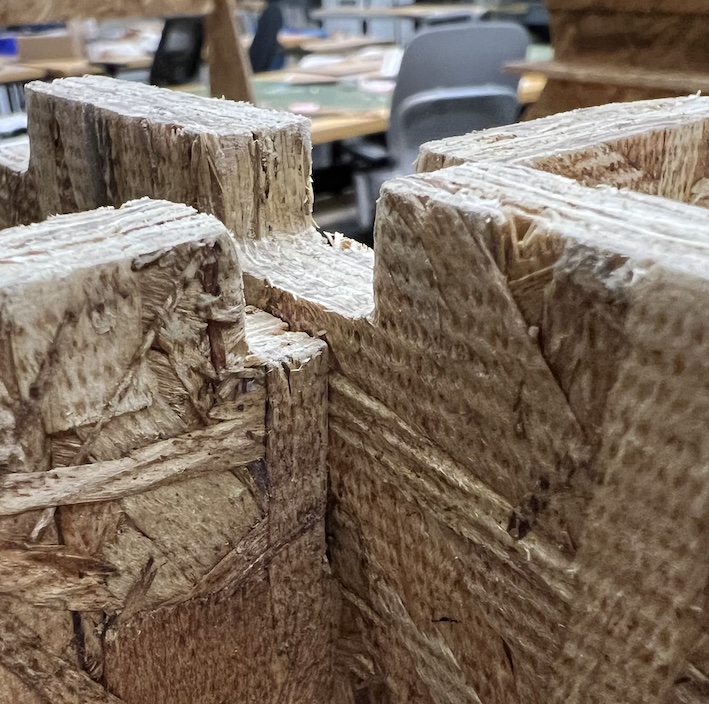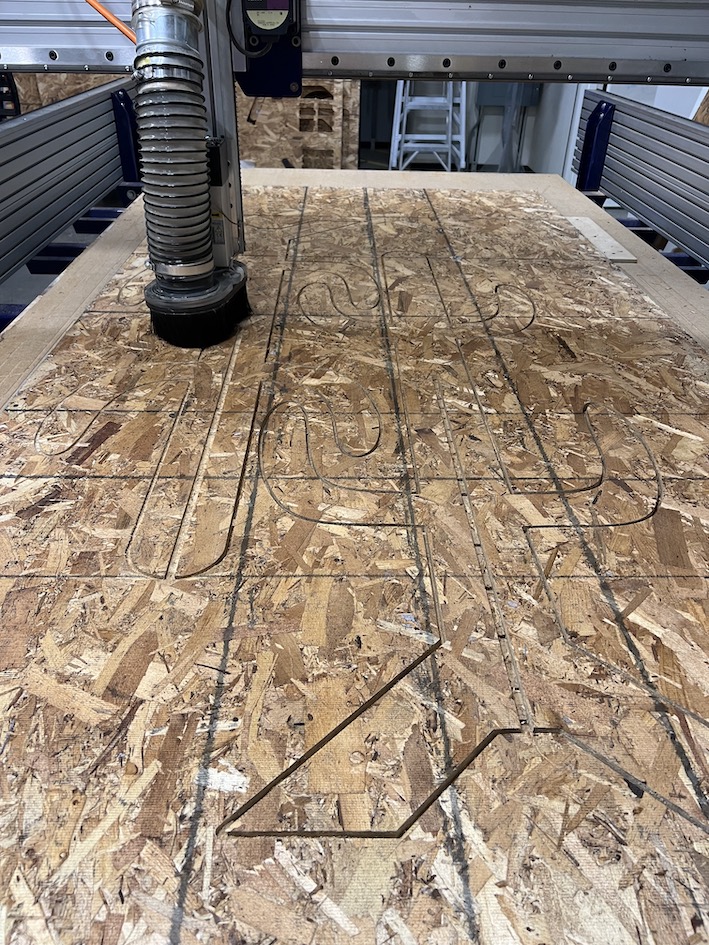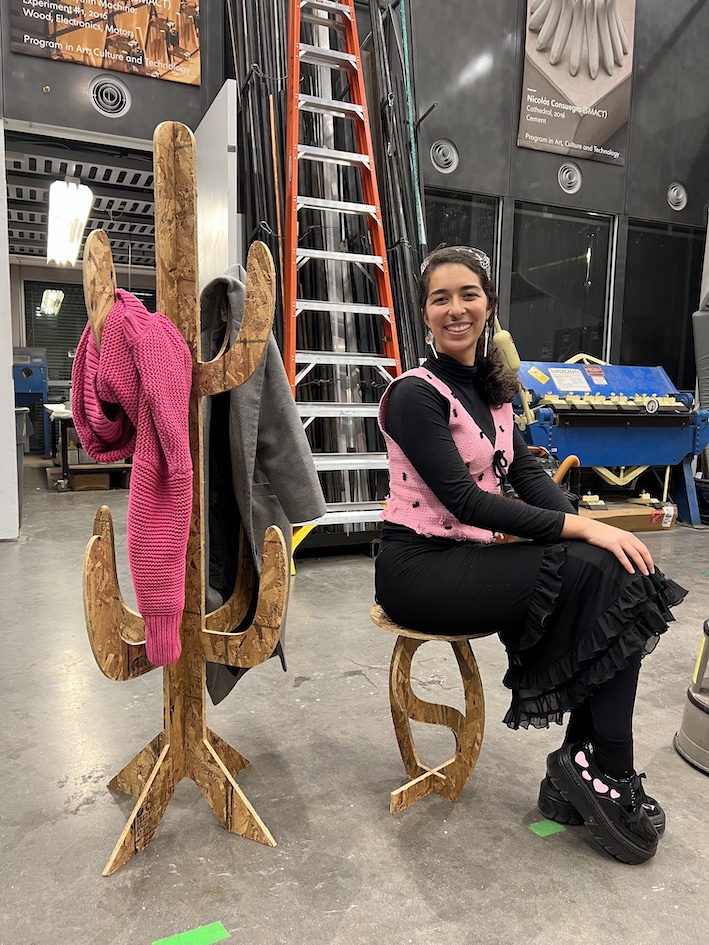Week 8 - Computer-Controlled Machining
Our assignment this week was pretty open-ended: make something big using our design + CNC machining capabilities. Our default stock material was oriented strand board (OSB) a not-so-great wood made by strands (and mostly) glue. But it’s a great material for prototyping and experimenting with, so this week I tried making two designs with it. Initially, I wanted to pursue one cool tensegrity project, but while this is certainly doable in this class, it would require getting new materials and most likely some iterations until getting a working prototype. I archived that idea for now but certainly want to try it out in the future!
After researching types of furniture that can be made with CNC machining, I decided to fabricate a small chair using my initials as the format of the legs, and which would be held together entirely by press-fit joints. I designed it using Fusion360 and added dog-bone fillets to my joints. Then it was time to move to CBA machine shop.



We used ShopBot 3-axis milling machine for this week and created our GCode (CNC instructions) with VCarvePro. With the assistance of John, we changed my DXF which was in mm to inches, added tabs to stop the material from moving when it was finishing its cut, and made sure we were using the correct tool (¼ in diameter) and number of passes (2 passes of 0.26in each for cutting the stock with ~0.44in thickness). We zeroed the tool and the cut itself took less than 10 minutes!



On assembly, I discovered that my dogbone fillets weren’t actually cut in the OBS. After some investigation throughout the week, I discovered that VCarvePro doesn’t actually recognize all the fillets from DXF files and sometimes doesn’t include them in the GCode path (but it does let you visualize the job before and also add fillets there, so you can catch this error before cutting the wood and fix it). I (mostly) fixed my joints problems that came from it with sandpaper and filing tools, and my chair was ready!



I was unsure if my small chair was going to count for something ~big, so I decided to also make a piece of furniture I actually need for my place: a standing coat hanger. Keeping the nature-inspired objects from my previous projects, I made my coat hanger resemble a cactus, a shape that should be sturdy and also hold clothing items well. This time, the VCarvePro recognized the dog bone fillets, and the CNC cut and assembly went smoothly. I only used sandpaper to smooth some edges/remove some wood splints that would come out of the OSB.



I am pretty satisfied with my pieces for this week and think they are fairly functional. I am excited to keep experimenting with CNC machining other materials and making sturdier and prettier objects.


Files for this week can be found here